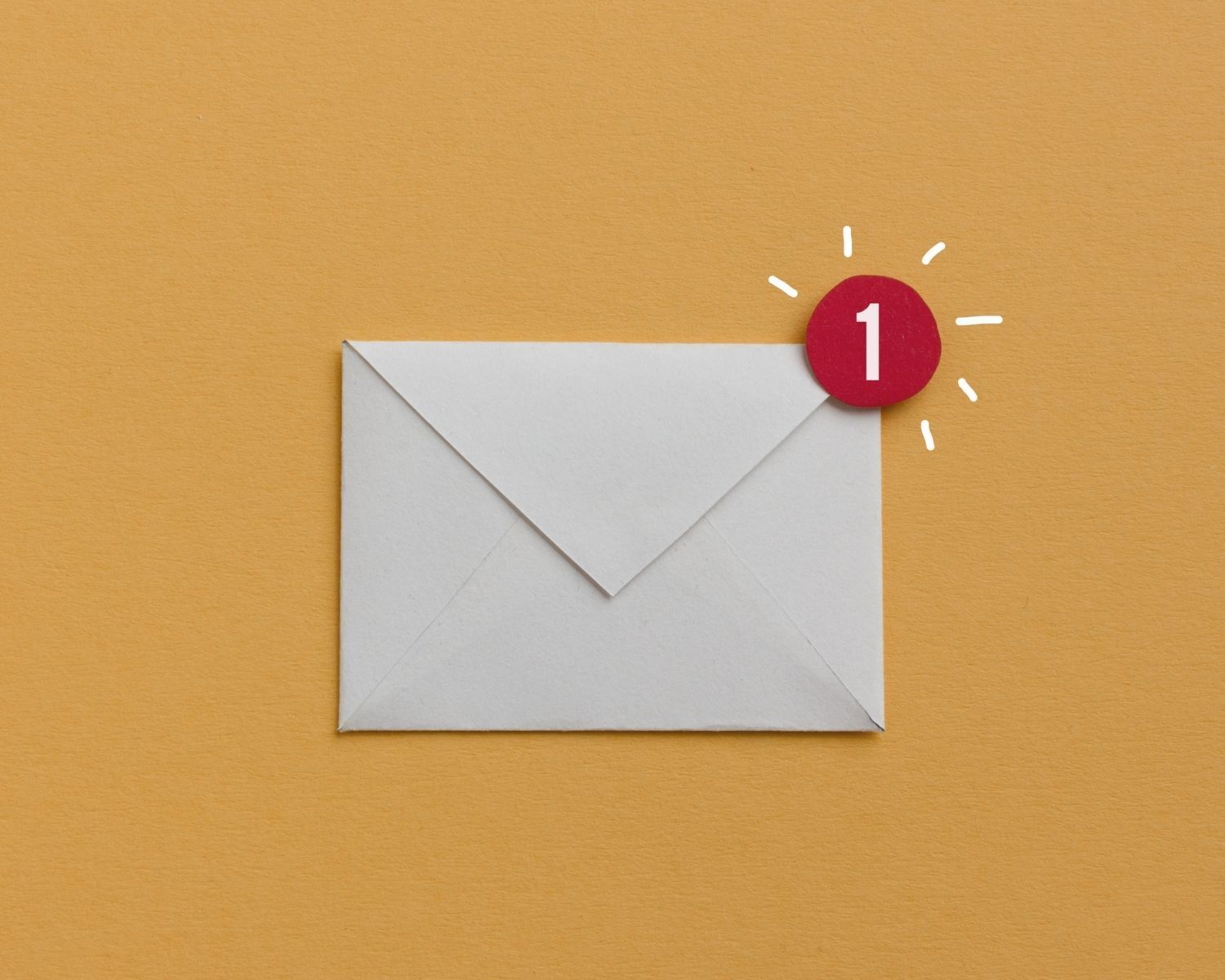If you are starting or growing your business, deciding where to invest your marketing budget is not a decision you take lightly.
You know that you need to attract new clients and keep your existing customers coming back, yet you can’t afford to invest your resources and time into something that doesn’t deliver the results you expect.
But this is exactly the opposite of a good email marketing strategy. One of its top benefits is that it provides one of the highest return on investment (ROI) of all forms of marketing.
To frame this in actual numbers: for every $1 spent on email marketing, there is an average return of $36. While all cases will be different, to have the opportunity of such a potentially high ROI channel when compared to other forms of marketing, you should be worried if you are missing out!
With email marketing, you can reach your customers as quickly as possible, it is used worldwide, and it saves you a ton of time (especially when you use automation).
So, do you want to use the power of successful email marketing campaigns to its fullest potential? If your answer is yes without hesitation, then you’ve come to the right place.
In this guide, we’ll show you our top 15 email marketing best practices you need to succeed.
Our Top 15 Email Marketing Best Practices for 2023
1. Send Welcome Emails
This practice may seem obvious but allow us to highlight it anyway. Remember that first impressions count so you have to give your customers/ subscribers a warm welcome.
Nowadays, after signing up for newsletters or making a first purchase from a website, many customers expect a welcome email. By sending one days later, not sending one, or sending the wrong message, they may interpret that you don’t value them.
Not to mention that welcome emails help your subscribers get familiar with your business – its messaging, tone, colors, value, and personality. You may even want to share in your welcome email what your future emails will be about, and offer to answer a question or the expected frequency.
2. Don’t Skip Audience Research
Every little thing you discover from audience research will directly influence what you will, later on, share with your subscribers and how you can nurture such a relationship.
If you won’t make the effort to know and understand your audience, you are just making assumptions or guessing with your email marketing campaigns.
The reason why we included audience research in this list of email marketing best practices is that you get to know your subscribers or target audience better based on their demographics, psychographics (which tells you things that your audience cares about or their activities, interests, and opinions), and online analytics.
Wondering what happens when you understand your audience? You get more leads, higher click through rates, more referrals, and eventually, sales go up.
3. Make it Exclusive
Next in our list of email marketing best practices is to make it exclusive. It means limiting an offer to a certain group of people. This sends a message that a service or product is valuable and is in short supply, making your subscribers feel more special.
A study on psychology has shown that people tend to place more value or desire scarce things. When used in email marketing, it helps increase conversion and customer engagement.
This strategy was used by British luxury department store Harvey Nichols. During Black Friday, it sent an email to its customers/subscribers by offering a sale preview to “Reward members.”
“Just for our Rewards members, enjoy early access to our Black Friday weekend!” its email reads.
Are you having issues with low engagement, flagging spam filters, and high bounces? Stop wasting time doing things on your own. InboxAlly has a team of experts ready to help you on your path towards 100% deliverability!
4. Conduct a 5-Second Test
A technique that is guaranteed to give you email marketing insights, save you time, and know how well your email campaign performs is called the 5-second test.
It’s primarily used for landing pages and websites, but really, you can also apply it in your email marketing strategy. Why? Because you also only have a brief moment to capture your audience’s attention.
What you’ll do is to send a copy of your email to a business associate or a friend. Can they quickly tell what’s the call-to-action of your message? If your answer is yes, then that’s great news. If not, don’t worry, just keep on working with the different elements of your email from the email subject line to the content itself and then the CTA.
There are plenty of email marketing tools at your disposal, including marketing automation and advanced analytics to track your success.
5. Don’t Say Too Much
We understand the need to stay competitive in the industry which you’re in. And with that, it’s not enough to just craft an elegant message that converts. The manner that you present your idea also matters in marketing emails.
And one way to improve your email is to follow the email length best practices. Take note, most of your subscribers are not reading emails the way they do print media or books. Most of them are text scanners – their eyes typically follow the “F” pattern.
The F pattern refers to the fixations that are concentrated at the top of the left side of the email, down the page a bit, and then read across a horizontal movement in a shooter area compared to the previous eye movement. It’s the F-shaped reading pattern.
As such, this is exactly what you should implement in this email marketing best practice. Emphasize these areas or introduce graphical elements that will disrupt the layout and make your readers shift away from F-pattern scanning and still be interested in what you’re saying.
Again, don’t say too much. If your goal is to increase click through rate, do not reveal too much information but give your subscribers compelling content that will entice them to click to read the full blog post or visit the website.
6. Plan Ahead
This practice is most important for those sending a recurring newsletter, whether it’s daily (although that’s a little too much), weekly, or monthly. Plan and stick to that schedule at a consistent time.
When you plan your content ahead of time, you are more likely to meet your subscriber’s or clients’ goals more effectively. As a result, you provide them with the best email marketing campaigns possible.
Ask yourself or your team the following questions: what’s the purpose of this email? What is the target audience expecting to receive? Who will read it?
7. Add a “View in Browser” Link
Perhaps by now you already know the importance of a call-to-action and have even achieved the perfect balance of taglines to icons and text to images. But did you add a “view in browser” link? Or “view this email in your browser”?
This feature offers your readers an alternate viewing method that remains relevant as ever. It is a hyperlink text that is located at the footer or header of an email that allows your subscribers to read the email in its online version.
But for us, we find it better to position this link at the top of the email to make sure that any rendering issues will easily be fixed by clicking through to that link.
Formatting mess and broken images are sure-fire ways to have your email quickly sent to the trash. Although those messes may not be your fault, your business will still be the one to suffer the consequences.
So, better have this hyperlink option in your email.
8. Use the Curiosity Gap in Your Subject Line
Using the curiosity gap in your email subject lines can help you grab the attention of your subscribers and cut through the noise of the inbox.
However, you need to craft it carefully. Don’t use clickbait subject lines as your email may end up in the spam folder instead of the inbox.
What we mean instead is you present an information gap in your subject line and then bridge that gap in your email body. It could be in the form of an open-ended question, one that creates intrigue, or the use of powerful words.
Other email marketing tips to help you write better subject lines are to use a friendly or positive tone, write in easy-to-understand and clear language, and keep your subject line short.
9. Give Your Recipients a Compelling Reason to Click
This applies not just in your subject line but to your call-to-action too.
It’s easy to use the standard text “click here” or over complicate your campaign by using too much text that’ll only distract your readers.
That’s why we recommend you craft a more appealing offer, which requires you to understand what it is that your target customer truly wants. Why not test a few different offers and see which one performs best?
You may use these power words in your CTAs:
- Now
- Create
- Off
- Save
- Show
- Enter
- Explore
- Find
- Join
- More
- New
- Try
- Upgrade
- Shop
- Start
And just as it is important to give your recipients a compelling reason to click, don’t forget that minimizing the clicks it takes for them to subscribe to your email newsletter is also important. The home page is an ideal place to put your opt-in.
10. Use Social Proof in Your Email Marketing Strategy
Social proof, like user-generated content, customer ratings, and reviews, can help bring your readers to a buying decision and build your credibility.
Two of the most popular online review platforms are Amazon and Google. Moreover, almost 60% of consumers use either of these platforms to read reviews before making a purchase.
11. Set Up An Automation
Most email marketing platforms provide like an auto-responder can be used to send time-based messages or emails that are sent automatically after a visitor signs up for your list and can remind people that they’ve opted into your database. For better results, include bonus material or additional content to reward the reader for opting into your newsletter.
12. Sync Your Email and Landing Page
The landing pages or page should match your email in terms of content, copy, and headline. Do know that consistency goes a long way toward earning the trust of your email clients and website visitors.
With synced efforts, the message you sent plus the landing pages will help you know where the leads are coming from and how you will approach them later on. It likewise gives a consistent message (brand voice) across your web properties.
Make sure your email looks good on all screens including mobile devices and you can ask help from a professional-grade email service provider for this work.
13. Remind Your Subscribers What You Do
Included also in our email marketing best practices is to remind your readers what you do.
For all your email campaigns, whether it’s to people who signed up to your newsletter months ago or to existing users, include a link to remind them what your business is all about. This helps justify the significance of your mindful being in their inbox.
14. Avoid Spam at All Costs
Some words you’re using in your email message may be automatically triggering spam filters set by the email service providers. This can cause your entire email campaign to be blocked, which you surely don’t want to happen.
So, avoid spam at all costs. Don’t make your content appear spammy.
Some words that may trigger the spam filters are “free,” “order today,” or “lose.” You can also search on the web for a comprehensive list of words that trigger spam filters to improve your marketing campaigns.
Other email marketing best practices you can follow to avoid landing in the spam folder include not writing in ALL caps, especially in your subject line, cleaning up your list, including an unsubscribe link in all your emails, and being clear with your “from address.”
15. A/B Test Your Campaigns From Subject Lines to CTAs
Our list of email marketing best practices won’t be complete without the A/B test. This is because it’s important to see what part of your email, especially for automated campaigns, resonates with your recipients.
Work Wonders with Your Email Marketing Campaigns
That’s it. With these email marketing best practices, you can ensure email deliverability and engagement.
We wish you luck and if ever you need help with your campaign, know that InboxAlly can help you to increase your open rates without fear of landing in spam.





